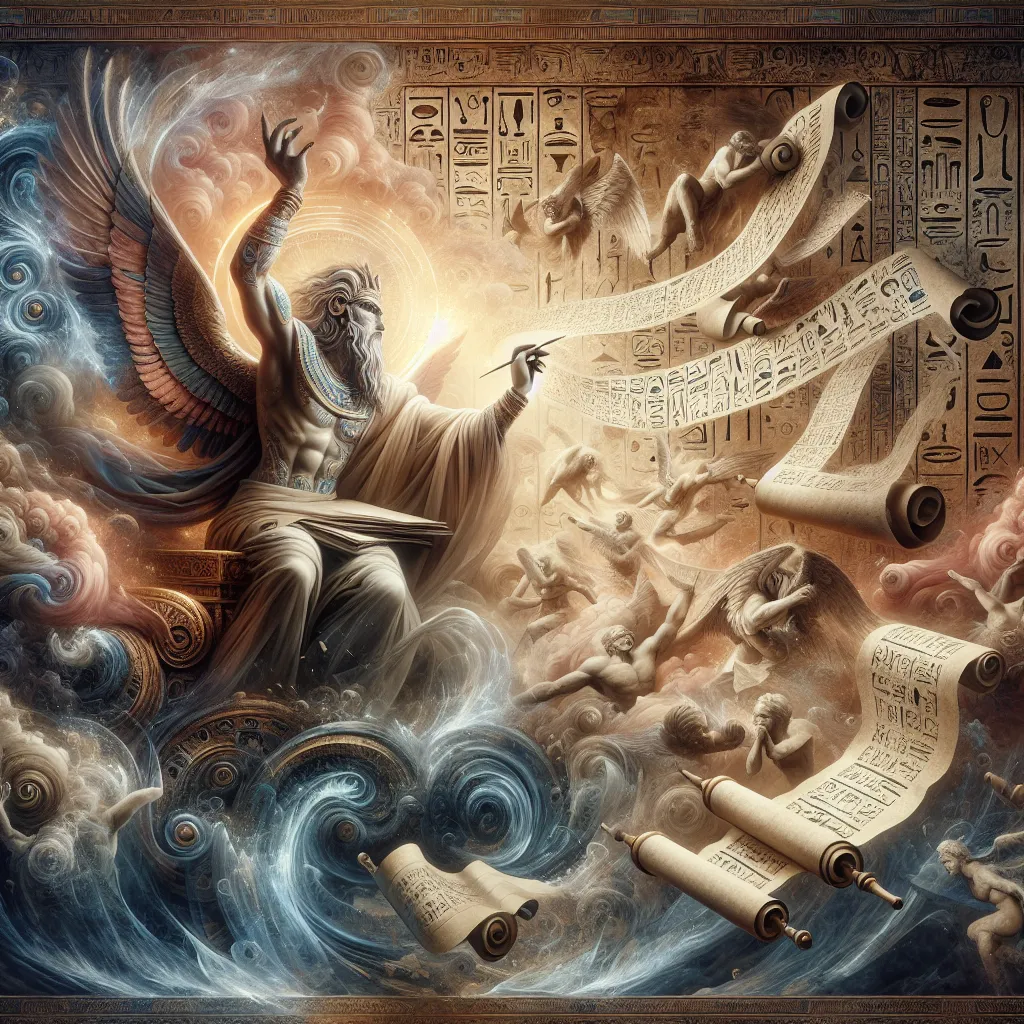
- Published on
- Authors

- Name
- You
Thoth and the Invention of Writing: The Birth of Hieroglyphs
Introduction
The invention of writing marks one of the greatest milestones in human civilization. Central to this monumental achievement is Thoth, the ancient Egyptian god of wisdom, magic, and the moon. His contribution to the creation and preservation of the hieroglyphic script not only highlights his divine wisdom but also the intertwining of mystical and scientific knowledge in ancient Egypt.
The Divine Scribe: Thoth
In Egyptian mythology, Thoth, often depicted as an ibis-headed deity or a baboon, was revered as the patron of scribes, and the inventor of written language. Known as Djehuty in Egyptian, Thoth was believed to be self-begotten and self-produced, symbolizing the eternal cycle of knowledge and the endless quest for wisdom.
The Birth of Hieroglyphs
Hieroglyphs, the sacred carvings, are among the earliest writing systems known to humankind. According to myth, it was Thoth who gifted the knowledge of writing to humanity. This sacred script was more than mere symbols; it represented a form of divine communication, bridging mortals with the spiritual realms.
| Attribute | Description |
|---|---|
| God | Thoth (Djehuty) |
| Depictions | Ibis bird, Baboon |
| Roles | God of Wisdom, Magic, Writing, Moon |
| Contributions | Invention of Hieroglyphs, Patron of Scribes |
| Symbolism | Balance, Knowledge, Divine Mediation |
Science and Mysticism: The Script of the Gods
While the invention of hieroglyphs can be seen through the lens of divine inspiration, it also encompasses profound scientific advancements. The complexity and structure of hieroglyphic script demonstrate an advanced understanding of semiotics and linguistics. Each glyph was not merely a pictogram but a sophisticated combination of phonetic and ideographic elements which could convey nuanced meanings and sacred concepts.
The Three Forms of Hieroglyphs
- Phonograms: Represent sounds or groups of sounds.
- Logograms: Represent entire words or concepts.
- Determinatives: Provide context to other symbols, clarifying their meaning.
This trinity of forms reflects a deep comprehension of the world, both tangible and ethereal, and illustrates how ancient Egyptians viewed the act of writing as a powerful, almost magical, practice capable of bridging the mortal and divine.
Thoths Hermetic Wisdom
The legacy of Thoth extends beyond Egypt. In the Hermetic traditions, Thoth is syncretized as Hermes Trismegistus, a legendary figure known as the thrice-great scribe of the gods. The Hermetic texts, written in the centuries following the decline of the Pharaonic civilization, extrapolate on Thoths wisdom, blending it with Greco-Roman understandings of mysticism, alchemy, and science.
Conclusion
The birth of hieroglyphs through Thoths divine intervention is more than a tale of mythological wonder. It encapsulates a critical juncture where advanced scientific acumen and mystical insights converge. This synthesis allowed for the creation of a script that not only recorded history but also carried spiritual significance, ensuring that the wisdom of the gods could be disseminated across generations.
By exploring Thoths association with hieroglyphs, we gain insight into the profound ways in which ancient civilizations approached the nexus of knowledge, spirituality, and the written word—a testament to humanity's enduring quest to understand the universe.
May Thoths wisdom continue to inspire the scribes of today, and may the sacred symbols of hieroglyphs keep whispering the secrets of the ancients.
